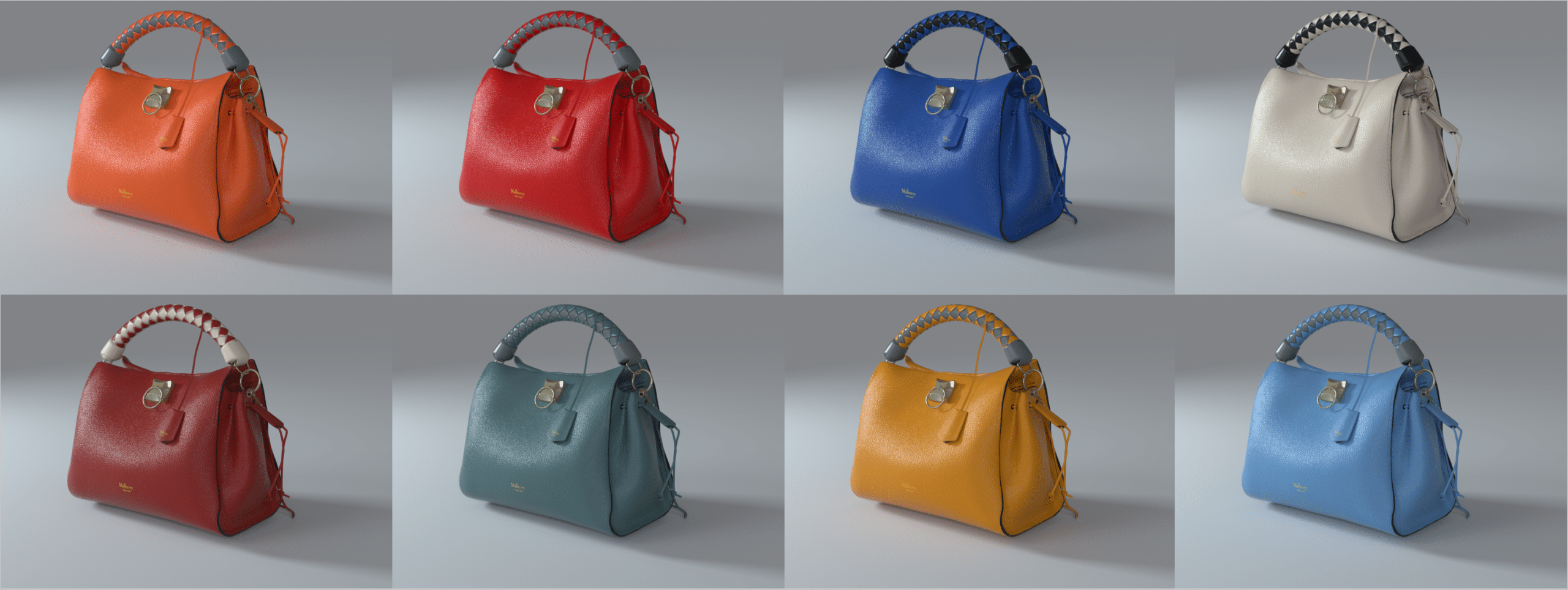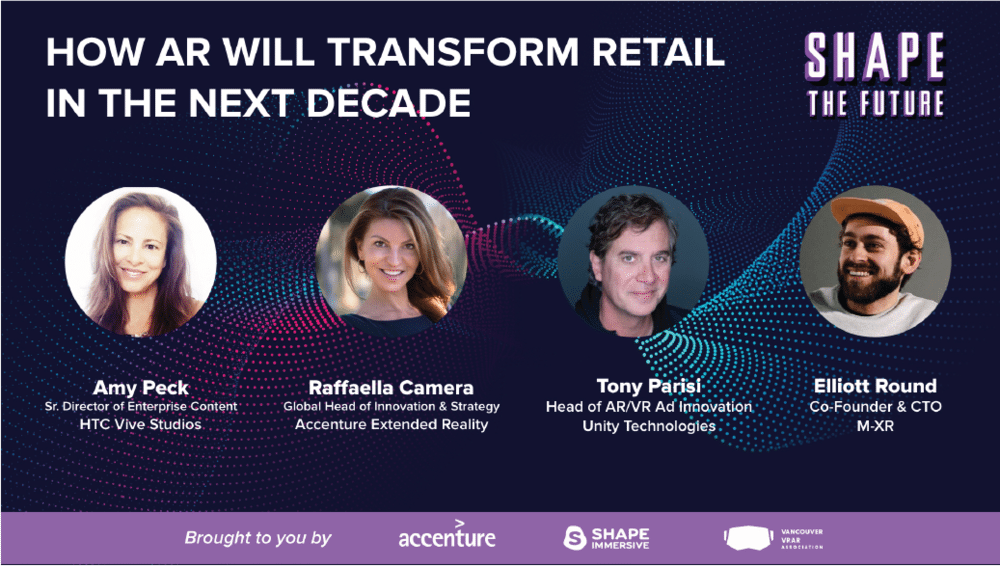
XR Talks is a series that features the best presentations and educational videos from the XR universe. It includes embedded video, narrative analysis and top takeaways. Speakers’ opinions are their own. For a full library of indexed and educational media, subscribe to ARtillery PRO.
Advertising continues to be a bright spot in AR’s otherwise-challenged early days. Brand spending on AR ads is on track reach $1.41 billion this year according to ARtillery Intelligence estimates, making this one of the most high-performing subsectors of the AR universe.
But the opportunity goes beyond advertising. AR will influence commerce through brands’ and retailers’ self-distributed apps for eCommerce and in-aisle retail experiences. This involves an expanding value chain from 3D product models to experience creation to distribution to analytics.
To make sense of all of this, Shape Immersive ran a series of virtual events over the past few months. The takeaways were robust enough to devote a 3-part run of our weekly XR talks series, starting here in part 1 by examining their first two episodes (videos and takeaways below).
Here Today
Though AR could be revolutionary in consumer shopping, it will vary across product categories. Not the silver bullet it was trumpeted to be during the circa-2017 hype cycle, AR will add value to some shopping scenarios (furniture, fashion) more than others (consumer electronics).
Similarly, the playbook will vary. Some products require rich textures and lighting says M-XR’s Elliot Round, such as high-end handbags sold on attributes like material. But viewing a couch in AR is more of a utilitarian endeavor, so it’s more about accurate dimensions to see if it fits.
This is similar to the point made by M7’s Matt Maher in last week’s featured video. Working with Panera to create 3D models of its breakfast wraps, it splurged on high-end photogrammetry. That’s simply because it’s a product for which image detail is critical to achieving “craveability.”
M-XR similarly creates detailed product renderings, which plays out in the 3D models, but also the graphical work it does to develop realistic textures and dynamic lighting (see below). Unity’s Tony Parisi reiterates that this high-end capability is here today… we just need to make it scalable.
“It’s not complete research right now,” he said. “These are being put into practice. You can actually use today’s technologies — phones, game engine tech, web tech — to pretty faithfully represent these things now. So the issue is not the ability to do it: It’s the ability to create the content at scale.”
Value Chain
Unpacking Parisi’s scalability point, a handful of brands are already executing AR visualization — from M-XR’s high-end handbags to Panera breakfast wraps to IKEA couches. But what about the ability for Walmart and Amazon to capture and distribute 3D models for millions of SKUs?
On the bright side, the upfront investment in 3D product models can be amortized over time if brands get enough mileage out of them. Accenture XR’s Rafaella Camera believes brands should build assets now, given the lead time required and the long-term benefits possible.
“3D assets are incredibly important, even if you’re trying to reach influencers on social media or any form of advertising that might be AR-based.” she said. “So I think every company is trying to create AR and 3D assets as much as possible and figure out what is that pipeline, and how can you reuse them?
Parisi agrees, adding that brands who invest in this pipeline should be patient with ROI. Per the above amortization point — and points made last week by M7’s Maher — investing in an AR strategy is a long-game. So brads who do “one-off” campaigns won’t see as much value.
“If you focus on, say, building one experience, typically that means you’re going to do some kind of production exercise that’s going to be a bit expensive [for] your first one. There’s a lot of learning there, and you may not know all the right places to distribute. So those first few end up not necessarily having the ROI you might want, versus leaning in and saying, ‘we’re going to take a piece of our catalog and do multiple products’.”

Just-in-Time
In addition to developing all these 3D and AR moving parts for consumer-facing experiences, they can also apply to valuable back-end use cases, says Camera. That can mean retail buyers visualizing a given product for large orders, or even research to inform product development.
“The back-end part of retail is where everything starts,” she said. “So if you can do the majority of your tasks virtually: if you can try them, if you can see what modifications to make — not only internally but also test them with users — and do research for product design that way, you can go a lot further and reduce your mistakes.”
This less-discussed use case for AR commerce could resonate with lots of brands and retailers for its financial impact. By test-marketing products virtually rather than physical prototypes, demand signals can be gained in more streamlined ways, a la just-in-time production.
“If everything was purely virtual and didn’t have to exist until you just-in-time manufactured it, at the extreme we could have next to zero physical inventory,” said Parisi. “Any movement toward this would reduce costs, so that’s a production enabler. But more than that, it makes people who deliver these products more nimble. You can test-market products that never existed in the real world.”
The good news is that the goal is in sight. The next few years will be about scaling up to Amazon-sized product libraries. Once we get there, it’s fairly logical to extrapolate — especially through the lens of current retail lockdowns — that 3D and AR shopping will be the new digital standard.
“That’s the game we’re going to see in the next couple years as the platforms, toolsets, and service providers are able to rapidly create digital twins of every object in every catalog — the way we have digital photography of everything now. […] Google can show great makeup try-ons or search results of one shoe that you can spin around. That’s interesting, but it gets really interesting when you can do that with everything.”
See episodes 1 & 2 below including moderation by HTC’s Amy Peck.






